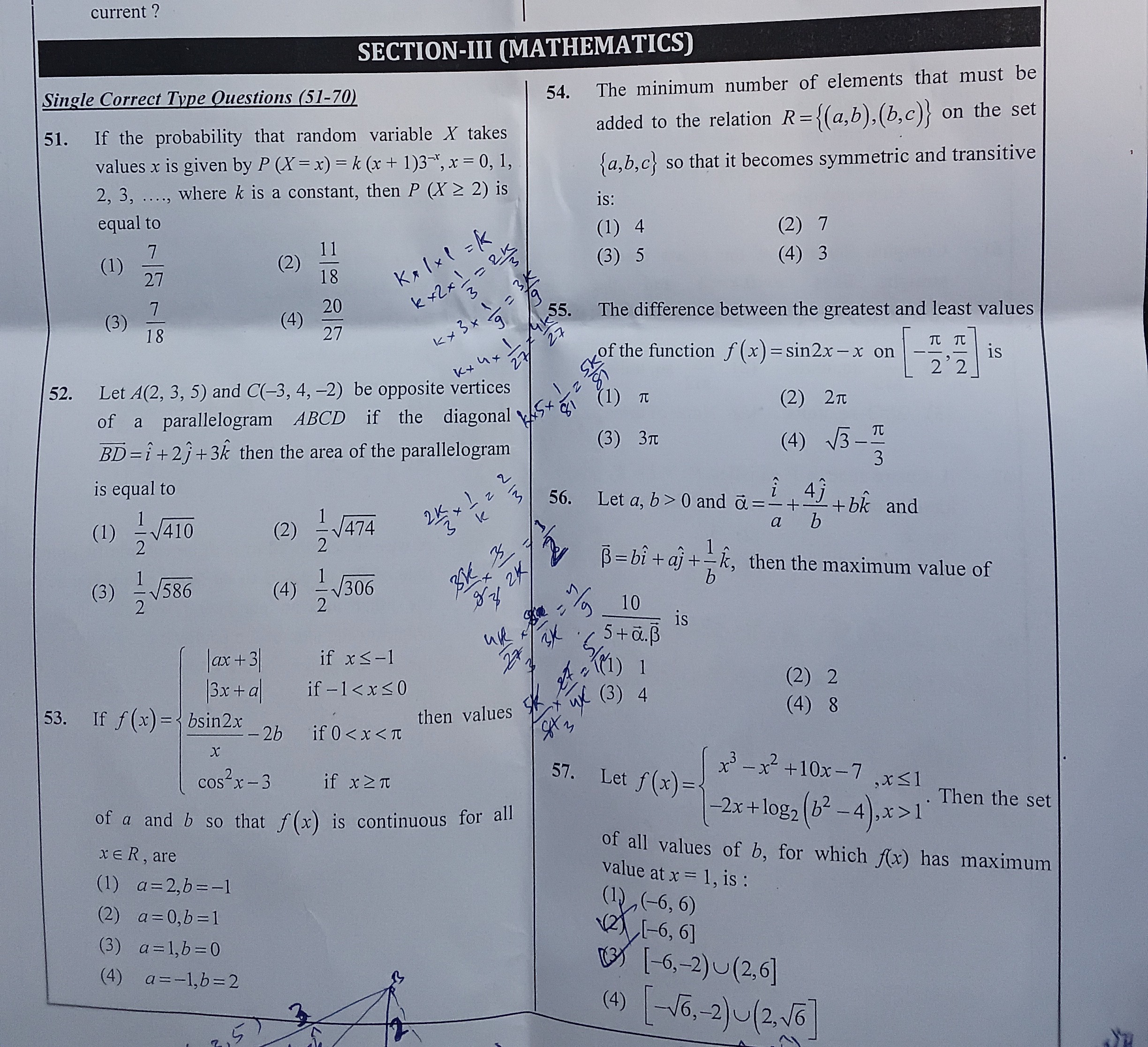Question
Question: If the probability that random variable $X$ takes values $x$ is given by $P(X=x)=k(x+1)3^{-x}, x=0,1...
If the probability that random variable X takes values x is given by P(X=x)=k(x+1)3−x,x=0,1,2,3,…, where k is a constant, then P(X≥2) is equal to

A
277
B
1811
C
187
D
2720
Answer
277
Explanation
Solution
The sum of probabilities must be 1: ∑x=0∞P(X=x)=∑x=0∞k(x+1)3−x=1. This sum evaluates to k⋅49=1, so k=94. The probability mass function is P(X=x)=94(x+1)3−x. We need P(X≥2)=1−P(X<2)=1−(P(X=0)+P(X=1)). P(X=0)=94 and P(X=1)=278. Thus, P(X<2)=94+278=2720. Therefore, P(X≥2)=1−2720=277.
